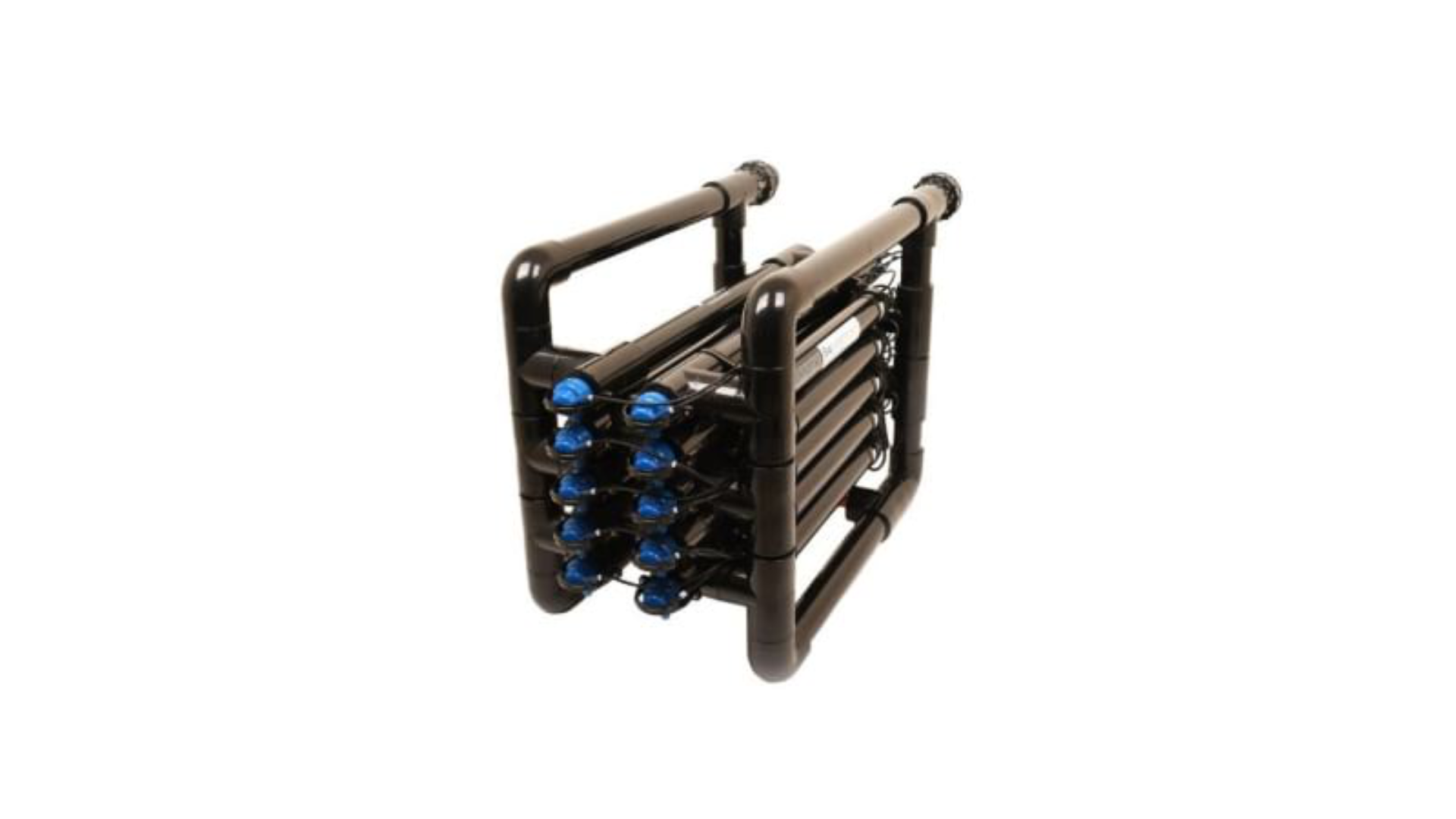Using TMC’s Titanium Commercial UVs

Product Spotlight
Quality
Marine is proud to be the exclusive North American supplier of Tropical Marine
Center UV Sterilizers, a product line viewed by many industry professionals as
the highest quality UV sterilizers available. TMC was a pioneer in the
development of UV sterilization systems and has successfully manufactured them
since the late 1970s. TMC recently released several new consumer and commercial
models which have become smaller, more rugged, and more energy efficient while
continuing to utilize the same time-proven technology as their
predecessors.
TMC Commercial Units
The
new TMC Commercial UV Sterilizers are equipped with lightweight energy
efficient electronic ballasts. These ballasts clip to the sterilizer,
providing a smaller profile and lighter weight than previous models. Also
new to these units are higher quality, easier to fit, and more reliable end cap
seals. Each lamp is located in its individual chamber for optimum efficiency
and contact time. Each unit is constructed exclusively from a specially
formulated UL1018 PVC compound, designed by TMC for its ultra-low toxicity and
high UV resistance properties.
The Science Behind the Product Spotlight

Principles of UV Sterilization
Ultraviolet
light is electromagnetic radiation with a wavelength between the blue violet
range of the visible spectrum and the shorter wavelength or X-rays. Ultraviolet
means “beyond violet” (ultra in Latin translates to “beyond”), and violet being
the color of the shortest wavelengths of visible light. The ultraviolet spectrum
is divided into three separate bands; UVa: 315-400nm, UVb: 280-315nm, and UVc:
200-280nm.
UVc is often referred to as the germicidal wavelength, due to its ability to destroy micro-organisms. The lamps in all TMC UV sterilizers emit a wide range of ultraviolet with its most significant part at a wavelength of 253.7nm, which studies have shown to be the most efficient for germicidal action.
When water is passed through a UV sterilizer, micro-organisms contained in the water come into contact with UVc radiation emitted from the germicidal lamp. The UVc radiation penetrates the cell membrane and thereby either destroys or debilitates the micro-organism.
Different micro-organisms vary in their susceptibility to UVc radiation. The most sensitive and hence, the easiest treated, are some bacteria and most phototrophic organisms such as those often found in ponds and aquaria. The most resistant micro-organisms to UVc are protozoans which may, when compared to simple bacteria, require several hundred times the radiation dose to destroy them. Generally, the larger the organism, the larger the UV dose required to damage it.
There are many hazardous and pathogenic aquatic organisms that can be controlled given the correct UVc radiation dose. Correct application will dramatically reduce the likely spread of most primary infections such as Amyloodinium sp.(Velvet) and Cryptocaryon sp.(Ich), at the same time almost eliminating the risk of secondary bacterial infection which is so often the real cause of fish loss. This is achieved by controlling potential populations of heterotrophic bacteria which are often associated with an unhealthy aquatic environment.
Factors Affecting Germicidal Action
Lamp Temperature: It is important that the lamp reaches its optimum operating temperature of 40°C otherwise the lamp will not generate the maximum amount of UVc radiation possible and the efficiency of the unit will be compromised. For this reason all UV water sterilizers must be fitted with a protective fused quartz glass sleeve, which keeps the UV lamp from direct water contact, which would otherwise act as a coolant. Unlike other materials, fused quartz glass allows the highest possible amount of UV light to penetrate into the water, thus maximizing the efficiency of the sterilizer.Units should also feature sealed end caps which help to maintain the lamp and the air around it at its constant optimum operating temperature.
Water Clarity - Dirty or turbid water with suspended particles will absorb the UVc radiation and dramatically reduce the effectiveness of the unit. It is important to ensure that the UV sterilizer is placed at the end of the filter circuit, before the water returns to the holding tanks to ensure that the water passing through the sterilizer is as clear as possible. Dissolved organic compounds also reduce the distance of penetration of the UVc radiation. Typically in any aquatic environment with fish or other animals present, there is a gradual buildup of phenolic compounds and other organic dyes. This buildup of organic dyes is often referred to as 'yellow water syndrome' and can be dramatically reduced by filtering through a good quality activated carbon (e.g. HR Carbon) or by using ozone.